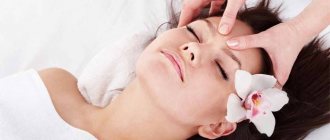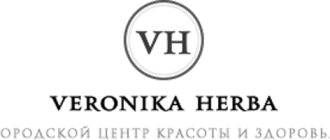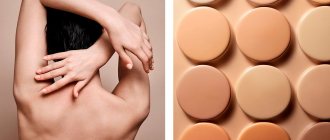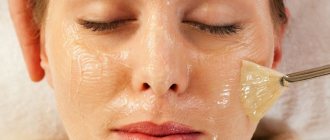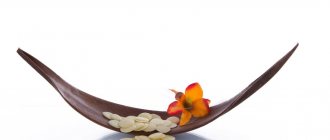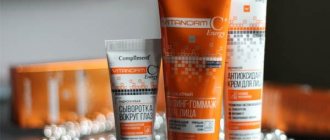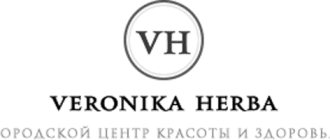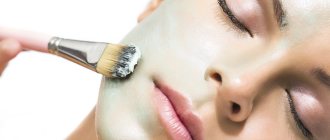The benefits and harms of honey peeling
Honey peeling can only be done if there are no allergies or damage to the skin.
Peels, like any cosmetic procedure, have a number of advantages and disadvantages. Let's look at the features of honey exfoliation.
Advantages
- Honey has a viscous structure that envelops the skin well and adheres tightly to the surface, due to which external and internal impurities are separated more easily and quickly.
- Candied honey is a ready-made scrub: granular inclusions massage the dermis, separating particles of dead skin.
- Honey has antibacterial, antiviral and antifungal properties, so during the cleansing process the skin is disinfected and freed from inflammation.
- The apiproduct contains more than three hundred valuable components, including vitamins and microelements: the skin, cleansed of impurities, is nourished.
Flaws
Peeling, the main component of which is natural honey, can be applied to the body, facial skin and lips.
- Like any natural product, honey is a strong allergen, so if you are intolerant to bee products, the sweet scrub should not be used.
- If there is active inflammation or dilated blood vessels on the skin, external use of the treat is unacceptable.
- Honey peeling should not be done if there are herpetic rashes on the treated areas.
- Sensitive dermis cannot be scrubbed or subjected to active mechanical influences, so a sweet exfoliant is not applicable in this situation.
Which honey to choose
Whatever honey you apply to your skin, the effect will always be there. tea tree honey is still considered the most useful . Why? The thing is that this is the most powerful antimicrobial, anti-inflammatory, antiviral and antiseptic agent.
You can not limit yourself to just peeling and prepare masks based on tea tree honey. They moisturize the skin, perfectly tone, enrich it with vitamins and minerals, fight redness, bacteria, acne, and sebaceous plugs.
Honey peeling recipes
Peeling based on honey and salt composition is the simplest and most budget option.
For those with sensitive skin, you can add ground oatmeal for a more effective effect on the skin. The Internet is replete with various ways to cleanse the skin using honey scrubs. To prepare homemade formulations, a variety of components are used that enhance the effect of the base ingredient.
The type of exfoliant and supplement are chosen according to the needs of the skin.
Peeling with salt
Among the recipes for scrubbing compositions there are salt exfoliants with honey. This combination has its undoubted advantages.
Effect of use
For girls with normal and dry skin prone to flaking, you can add figs crushed with a blender to the honey component in the same proportion.
Salt enhances the effect of the honey cleansing procedure. White crystals exfoliate the skin through mechanical and chemical action. Depending on the type of grinding, the exfoliant turns out to be more gentle or has a rougher structure. If honey is enriched with fine “extra” salt, the composition will be delicate and fine-grained. The skin will not experience the same stress as from encountering rough inclusions. If the api product is mixed with coarse table or sea salt, the scrub will cleanse the dermis more strongly, but it is better to use such products on the body, not on the face.
Cooking instructions
Take one tablespoon of candied or thick mature honey and mix it with a teaspoon of finely ground salt. Homogenize the mixture and add half a tablespoon of olive oil to the mixture. Stir thoroughly. The exfoliant is ready.
Instructions for use
Before applying honey-based peeling, be sure to ensure there is no allergic reaction. To do this, apply a strip of product to a small area of skin and leave for 5 minutes.
- Cleanse your face thoroughly with a product appropriate to your skin type and needs.
- Gather your hair with a headband or a wide band to protect your strands from sticky substances.
- Wash your hands.
- Apply freshly prepared peeling to your face using a wooden spatula.
- Distribute the composition over the entire surface of the face.
- Leave the scrub on for a couple of minutes.
- Massage your face with your fingertips, making leisurely small circular movements. Follow the massage lines and do not stretch the skin.
- Rinse off any remaining product with warm water.
- Pat your skin dry with a napkin or towel.
- Nourish your face with cream.
Peeling with lemon
Peeling with lemon will help eliminate skin defects such as pigmented age spots and fine wrinkles.
The sweet and sour composition effectively cleanses the skin and has additional benefits.
Effect of use
The presence of lemon in the cleansing mask enhances the effect of honey. Unlike scrubbing substances with pronounced particles, lemon-honey peeling cleanses the skin not so much mechanically as chemically. Lemon juice contains fruit acids that dissolve dirt and dead skin particles.
Masks with fruit acids brighten the skin. If you like dark and tanned skin, choose a different type of composition. Lemon peeling will appeal to those who struggle with age spots and freckles.
Cooking instructions
When applying the honey-lemon peel, avoid the areas around the eyes and lips to avoid irritation.
The scrub must be used immediately, so prepare the mixture in an amount sufficient for one use.
Take 1–1.5 tablespoons of thick honey. The presence of a candied structure is not necessary, but a mature product will also work. Wash the lemon and pour boiling water over it. Cut in half and squeeze the contents of half a lemon into a container with honey. Do not use all the juice - the mixture will turn out watery and will drain. Mix the ingredients thoroughly. The mask is ready to use.
Instructions for use
- Cleanse your face.
- Apply the sweet and sour composition using a cosmetic brush, moving from the center to the periphery along the massage lines.
- Lie down and relax.
- After 10–15 minutes, the mask can be washed off.
Honey peeling with the addition of natural abrasive particles will help make the skin more elastic and get rid of cellulite. Peach, apricot pits, or ground coffee are suitable as an additional component.
The acid mask can be applied not only to the face, but also to the neck and décolleté area. The skin in these areas is thin, so you need to cleanse the skin extremely delicately, avoiding friction and injury from coarse particles.
Lemon-honey peeling exfoliates dead cells by dissolving.
With this effect, delicate areas will not be harmed.
If the mixture turns out to be runny, cover your face with gauze or napkins while the composition is active - the mask will not drain from the treated areas.
Peeling with egg yolk
Peeling based on natural honey and yolk will be a lifesaver for those with oily skin.
The composition, enriched with yolk and oatmeal, turns out to be very tender.
Effect of use
Raw chicken egg yolks and fine oatmeal are components of many nourishing and soothing mixtures for dry and sensitive skin. The yolk perfectly nourishes and restores the skin, and oatmeal is a delicate exfoliant with a mild exfoliating effect. Honey peeling with yolk and oatmeal is recommended for the thinnest and most delicate skin prone to irritation.
Cooking instructions
Mix a large spoonful of thick flower honey with the yolk of a fresh chicken egg. Achieve a uniform consistency, add half a tablespoon of oatmeal to the mixture. Homogenize. The mask can be applied to the face.
Instructions for use
Before applying peeling, be sure to remove makeup and cleanse the skin of dust and other contaminants.
- Wash or cleanse your face with micellar water.
- Using a spatula, apply the paste to the skin.
- Leave the composition for 15–20 minutes.
- Lightly massage your face, moving along the massage lines in light circular movements.
- Rinse off the mask with warm water or remove any remaining residue with a paper napkin.
- Apply nourishing cream to your face.
Rinse the egg under running water before removing the yolk. There may be biological contaminants on the surface of the shell that can enter the composition and harm the sensitive dermis.
Why is it useful?
Facial scrubs made with honey have a number of beneficial properties.
They are universal and:
- perfectly cleanse skin of any type;
- eliminate fine wrinkles, acne, pimples;
- restore and rejuvenate the epidermis;
- moisturize and nourish it;
- remove peeling (read more about scrubs against skin peeling in this publication);
- improve complexion.
At the same time , they act very gently , delicately exfoliating, removing the surface layer of the skin, nourishing its lower living layers. Cleansed epidermis, free of dead cells, better absorbs moisture and nutrients.
Honey-containing products will bring the greatest benefit to dry skin. They are suitable for those who feel tightness and flaking.
Such a scrub will help older women whose skin has begun to fade, lose tone, become sluggish, and the first wrinkles have appeared on it.
The products cleanse pores , get rid of blackheads, and nourish skin that lacks vitamins and other nutrients.
Honey masks are perfect as an emergency remedy if the skin is damaged by cold or strong wind.
Honey, especially with the addition of propolis, has antibacterial properties .
People have known about this property of the product for a long time, using it as an antiseptic for wound healing. This is why it is so effective for treating minor cuts, cracks and other skin damage.
How to properly use honey scrub at home
To prepare peeling at home, use only natural and high-quality products.
Fans of homemade cosmetics should remember a few important rules:
- Homemade peelings do not contain preservatives and cannot be stored. Each time the composition is prepared anew.
- Should I steam my skin before peeling? Decide for yourself. This move can lead to the appearance of dilated blood vessels on the face and redness of the skin.
- All masks and scrubs are applied to thoroughly cleansed skin with clean tools or washed hands.
- Exfoliation is designed to cleanse the skin of impurities and dead skin particles. This is not a daily procedure. Honey peeling is done no more than 1-2 times a week.
- Do not rub or stretch the skin - honey is quite viscous, excessive efforts can damage the skin.
Restrictions and contraindications
- Honey peeling for the face at home can only be used if you are not allergic to bee products.
- The set of components must match your skin type and needs.
- Honey exfoliant has a fairly dense and sticky structure, so you need to act extremely carefully so that the skin does not stretch.
- If your face has spider veins, dilated capillaries or large areas of hair, honey peeling should not be used.
Cleansing with honey is a pleasant and useful cosmetic procedure that is available at home. For everything to work out, it is important to choose the right composition and follow the recommendations.
Rules for choosing a natural product
Natural honey, despite its enormous benefits, is not suitable for everyone. It is rich composition that makes it a strong allergen .
Therefore, before any use of the product (including for cosmetic purposes), it is necessary to check whether it does not cause allergies .
This can be done by placing a drop of the sweet elixir on your wrist and waiting for 10-15 minutes.
If no itching or redness appears during this time, then there is no allergy - it can be used for any cosmetic procedures.
Unfortunately, low-quality or simply unnatural products are often found on sale. Therefore, it is best to purchase it from reliable manufacturers .
If this is not possible, then follow some rules when choosing:
- real honey has a bright taste, depending on the variety - it cannot be just sweet, it always has its own notes and shades, in addition, it causes a slight tingling, burning sensation on the tongue;
- it has a distinct smell that counterfeits do not have;
- a real, fully ripened product that falls in ribbons on a spoon when you rotate it;
- the correct product has a uniform consistency, without sediment or turbidity, it cannot foam or ferment.
Natural honey crystallizes over time and becomes hard (with the exception of chestnut, acacia and heather).
This occurs about a month after collection, usually in October or November. Very often you can find a liquid and transparent product in stores all year round.
This means that it was heated, depriving it of its beneficial properties.


